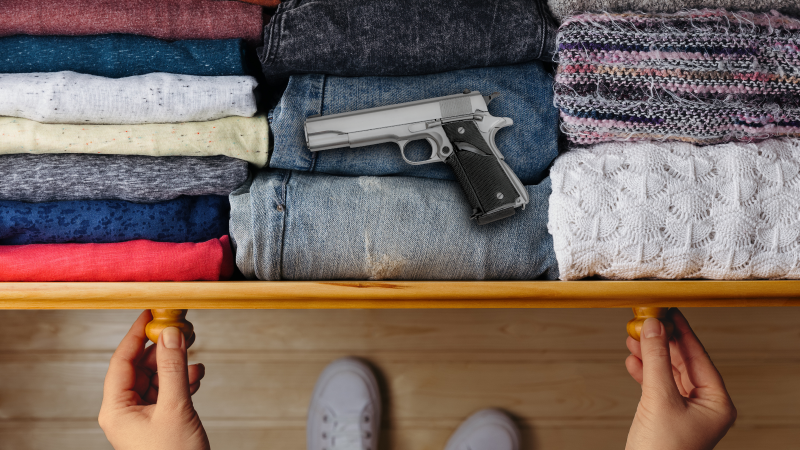Access to firearms for Californians aged 15–24 associated with increased suicide risk

Access to firearms for Californians aged 15–24 associated with increased suicide risk
Study examined ties between firearm proximity and psychological distress, suicidal thoughts, and suicide attempts
Media Contact:
Mike Fricano
310-794-5553
Key takeaways:
- In 2022, youth who had access to firearms were approximately twice as likely to have attempted suicide during their lifetime.
- Youth who expressed worry about being a victim of firearm violence were nearly twice as likely to report suicidal thoughts compared to youth who didn’t express those concerns.
- 1 in 4 California adolescents, ages 15–17, and nearly 1 in 3 Californians ages 18–24, said they had suicidal thoughts at least once in their lifetime.
Fears of gun violence and access to firearms showed troubling connections to suicidal thoughts and suicide attempts among Californians ages 15–24, say the authors of a new study by the UCLA Center for Health Policy Research.
Using data from the 2021 and 2022 California Health Interview Survey, or CHIS, the researchers found that youth who expressed worries about being a victim of gun violence were nearly twice as likely to report suicidal thoughts in their lifetimes compared to those who didn’t express those concerns.
For 2022 specifically, researchers found that youth who said they had access to firearms were approximately two times more likely to have made a suicide attempt in their lifetimes compared to those who said they didn’t have access to firearms.
“What we’ve learned in this study reinforces the importance of thinking about firearms regulations less as a political issue and more as a public health issue, because that’s what the data show,” said Ninez A. Ponce, director of the UCLA Center for Health Policy Research and principal investigator of CHIS.
Suicide is a leading cause of death among adolescents (ages 15–17) and young adults (ages 18–24). Rates of lifetime suicide attempts among California youth are higher than estimates of national or worldwide averages. And suicide attempts by firearms have a high fatality rate, with almost 9 in 10 suicidal behaviors involving a firearm resulting in death.
The researchers found that 24.6% of adolescents (ages 15–17) reported having had thoughts of suicide in their lifetime. Of those adolescents who reported thoughts about suicide in the previous year, 32.9% reported making a suicide attempt.
Among young adults (ages 18–24), 30.8% reported having had thoughts of suicide in their lifetime, while 32.4% of those who had thought about suicide in the previous year reported making a suicide attempt.
In the CHIS study, researchers analyzed the relationship between gun proximity and mental health outcomes across sociodemographic information, such as race, sex, and poverty level.
Notably, they found that 14.2% of young adults in California — more than 500,000 — reported having access to at least one firearm. Across the same period, 1.5% of adolescents in California — more than 20,000 — reported having a firearm in the house.
“These results underscore the need to monitor and evaluate firearm access in particular among teens and young adults who are at increased risk for suicide,” said Roberto López Jr., a UCLA postdoctoral scholar and clinical instructor in the department of psychiatry and biobehavioral sciences and one of the study’s authors.
The researchers cautioned that the data do not clarify whether suicide risk preceded or followed firearm proximity, which was defined as encompassing firearm access and worries about being a victim of firearm violence. The data are indicative, however, that youth at elevated risk of suicide (by virtue of having made a prior suicide attempt, experiencing suicidal thoughts, and/or having psychological distress) may also have greater access to firearms.
Knowing that reducing access to potentially fatal items is a cornerstone of suicide prevention efforts, the report concludes with recommendations to California policymakers. These include promoting the use or distribution of lock boxes or other safe storage devices that limit access to lethal means (e.g., firearms, medications, etc.) as well as possibly adopting new gun storage laws.
The researchers suggested that suicide prevention workers and advocates could work with the gun industry to help educate firearms owners about the importance of safe storage practices and equipment.
They also recommend widespread outreach to schools and other community settings.
“If we want to connect with teens and young adults, we need to reach them where they are,” Ponce said. “Suicide attempts and self-harm are among the best predictors of death by suicide. The results of our study highlight the need for state-level policies that promote and implement evidence-based prevention programs across California.”
Read the publications:
#
About the UCLA Center for Health Policy Research
The UCLA Center for Health Policy Research (CHPR) is one of the nation’s leading health policy research centers and the premier source of health policy information for California. UCLA CHPR improves the public’s health through high quality, objective, and evidence-based research and data that informs effective policymaking. UCLA CHPR is the home of the California Health Interview Survey (CHIS) and is part of the UCLA Fielding School of Public Health.








